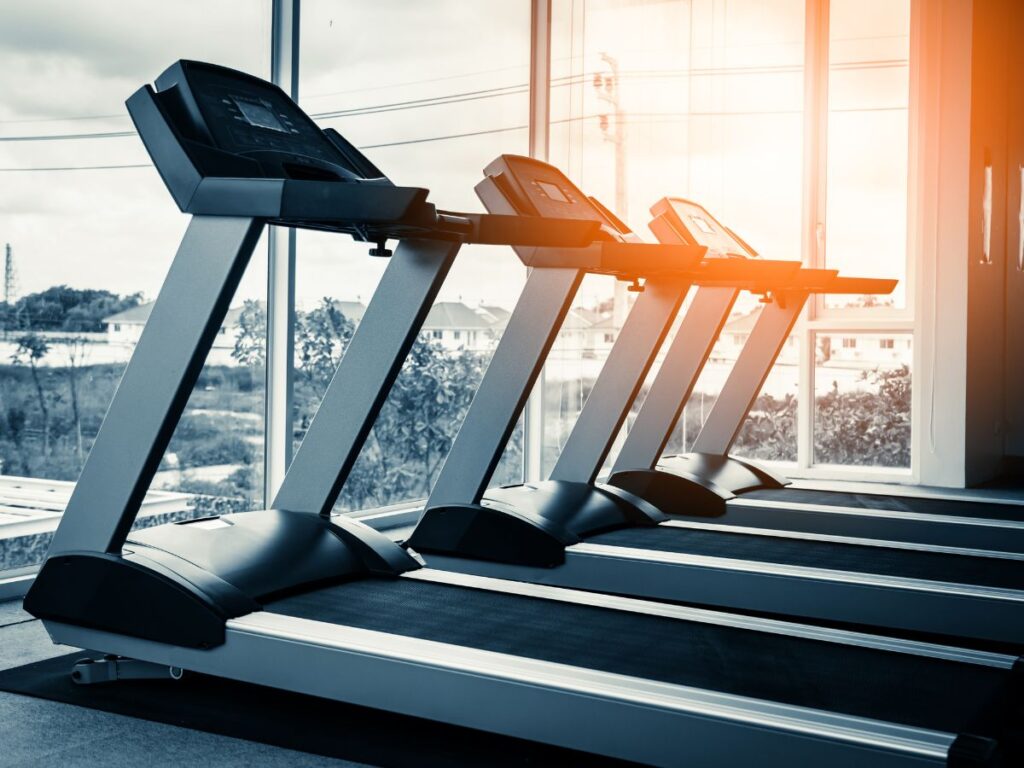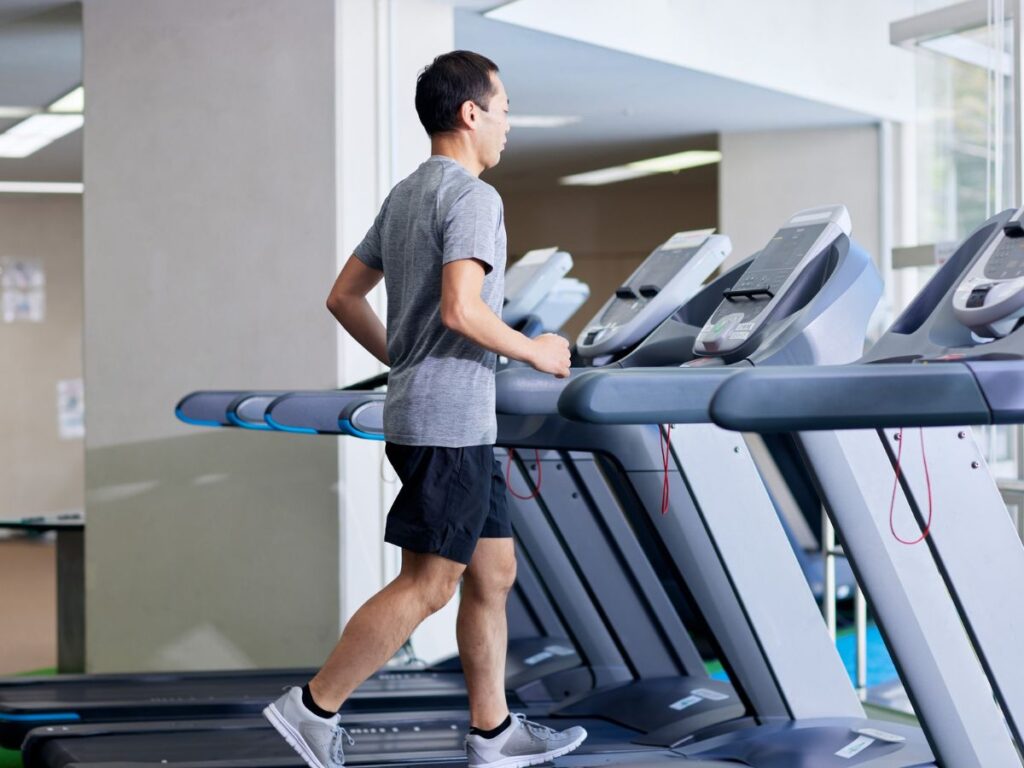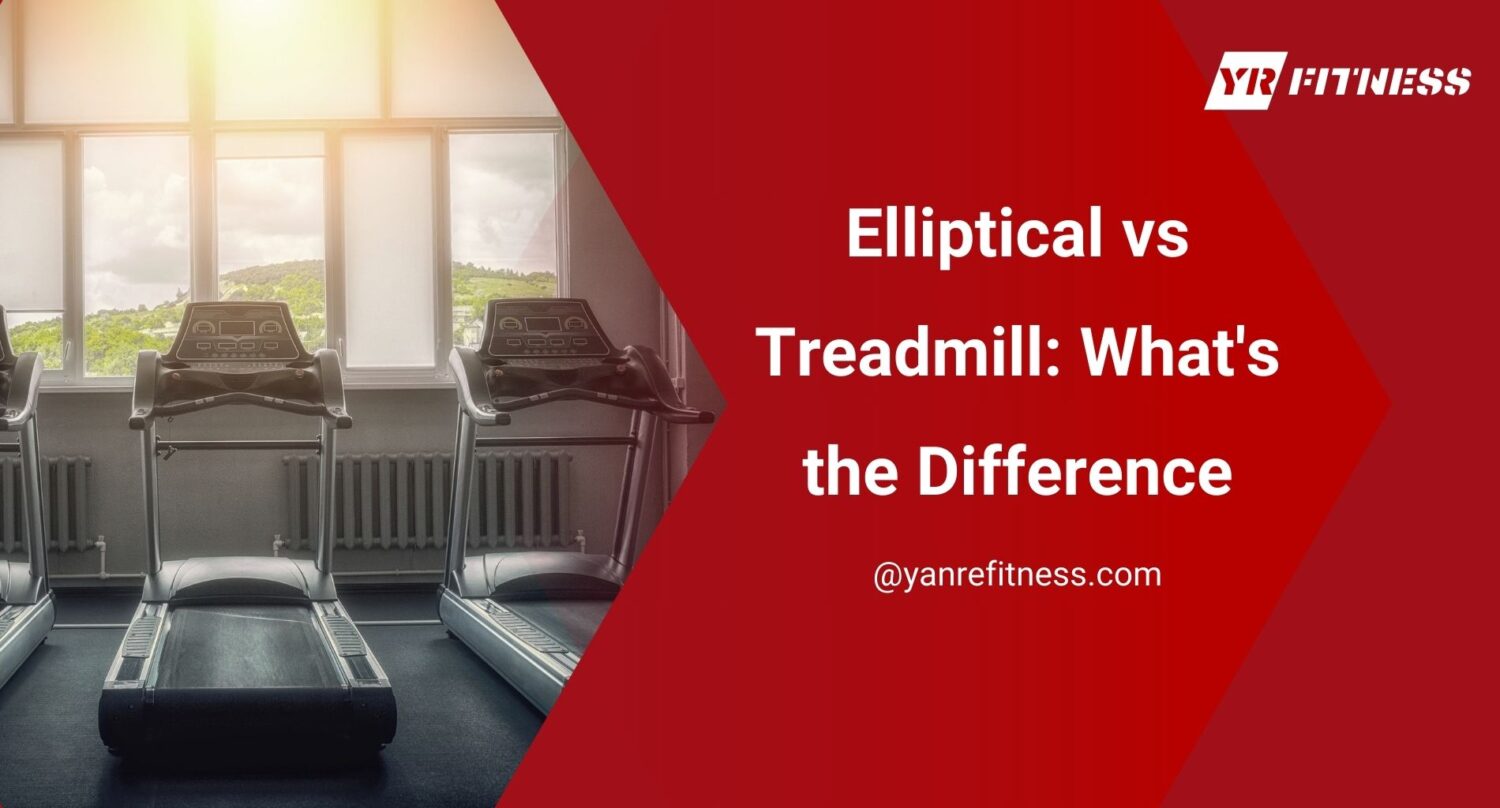When I opened my first gym, I bought 3 treadmills and 1 elliptical. I thought I had the right mix, until members started lining up for the elliptical.
That’s when I realized it’s not about which machine is best. It’s about which one works best for your setup.
I run a mid-size gym and have tested both under constant use. This review reflects what I’ve learned through real-world use, maintenance, and member feedback, not just spec sheets.
You’ll get a breakdown of how ellipticals and treadmills compare in durability, user impact, space usage, and business value. It’ll help you decide what suits your gym best.
So, let’s walk through it together!
Table of Contents
- Quick Comparison Chart
- 1. What is an Elliptical
- 2. What is a Treadmill
- 3. Motion Type and Joint Impact
- 4. Targeted Muscle Engagement
- 5. Calorie Burn and Perceived Intensity
- 6. Cardiovascular Conditioning Value
- 7. Learning Curve and Accessibility for All User Types
- 8. Equipment Footprint and Layout Planning
- 9. 4 Factors to Consider When Choosing Between Elliptical and Treadmill
- Conclusion
Quick Comparison Chart
Here’s a comparison chart to help summarize the key differences between ellipticals and treadmills for business buyers. This is a handy reference if you’re evaluating equipment for a gym, wellness space, or fitness facility serving a diverse group of users.
Category | Elliptical | Treadmill |
Impact on Joints | Low-impact, smooth gliding motion ideal for users with joint sensitivity. | Higher joint impact due to repetitive foot strikes, even with cushioning. |
Muscle Engagement | Engages upper and lower body simultaneously; supports full-body workouts. | Primarily targets lower body muscles; upper body involvement is minimal. |
Calorie Burn Potential | Slightly lower per minute, but promotes longer sessions due to comfort. | Higher burn rate, especially during running or incline intervals. |
Cardiovascular Value | Encourages steady-state cardio; suitable for longer, moderate sessions. | Excellent for high-intensity and structured interval training. |
Learning Curve | Very beginner-friendly; intuitive movement with strong stability. | Familiar concept, but requires more balance, coordination, and reaction. |
Space Requirements | More compact and flexible with placement; minimal clearance needed. | Requires more floor space and safety clearance behind the belt. |
Noise Level | Quiet operation, ideal for shared or noise-sensitive environments. | Louder due to belt motor and foot impact—can be disruptive in quiet settings. |
Maintenance Needs | Fewer moving parts, generally lower maintenance. | Requires more frequent servicing due to motor, belt, and incline systems. |
User Demographics Fit | Great for seniors, rehab patients, beginners, or general-use populations. | Best for runners, performance-focused users, or those training for events. |
Customization/Programming | Resistance and incline vary between models; dual-motion (forward/backward). | Offers precise speed, incline, and interval programming for advanced users. |
Overall Investment Return | Lower cost of upkeep; consistent usage across broader user types. | Higher intensity potential and appeal to performance-focused members. |
1. What is an Elliptical
When I first added an elliptical machine to my gym floor, I honestly wasn’t sure how much it would be used. It looked a little too smooth, a bit too quiet. But within a few weeks, it turned out to be one of the most in-demand pieces of cardio equipment. That experience changed how I looked at elliptical machines entirely.
At its core, an elliptical is a stationary cardio machine that simulates walking, running, or climbing stairs. The motion is powered by foot pedals and often paired with arm handles that move in sync. What makes it unique is the elliptical, or oval-shaped, path the pedals follow. This low-impact glide is easy on the joints and feels natural to many users, especially those recovering from injury or managing joint pain.
You’ll find both front-drive and rear-drive designs, and many commercial units come with resistance and incline settings to challenge users. What makes it a smart choice for business gyms is how accessible it is across a wide range of fitness levels.

2. What is a Treadmill
Back when I started planning my gym layout, I ordered treadmills without a second thought. Everyone expects a treadmill in a fitness space. It’s familiar. It’s versatile. And for many users, it feels like the most direct way to exercise.
A treadmill is a motorized platform with a moving belt that lets users walk, jog, or run in place. Some commercial treadmills offer adjustable speed and incline levels, along with built-in programs that simulate hills or interval training. Some models even include heart rate monitors, safety stop clips, and touchscreens for entertainment.
In a business setting, treadmills tend to be a go-to choice. They’re well-understood by beginners and easily scaled for intense cardio workouts, making them a dependable anchor for any cardio area.

3. Motion Type and Joint Impact
This is one of the first things I look at when picking cardio machines for mixed-use gyms. If the movement doesn’t feel good on the joints, people either quit early, or stop coming back altogether.
Elliptical: Easy on the Body
- Low-Impact Glide: What I really like about the elliptical is how easy it is on the knees and hips. The movement feels smooth and controlled, which gives people the freedom to go longer without the usual aches.
- Feet Stay Connected: Since your feet stay planted the whole time, there’s no pounding like you get from running. It’s something users really notice after just a few sessions, less soreness, more confidence.
- Gentle Enough for Rehab or Seniors: When I’ve helped set up fitness rooms in senior centers, the elliptical is always one of the first machines we install. It gives people with joint concerns a way to stay active without the fear of re-injury.
- Posture-Friendly by Design:You don’t have to coach form as much on an elliptical because the structure does a lot of the work for you. Users naturally stay upright, which helps avoid the slouching or leaning you sometimes see on other machines.
Treadmill: Realistic but Demanding
- Familiar Motion: There’s something about walking or running on a treadmill that just feels familiar. A lot of users appreciate that they don’t have to learn a new motion, it’s just walking, with more control.
- Higher Joint Impact: Even with a cushioned deck, you can still feel every step in your knees if you’re doing longer sessions. I’ve had people mention that running outside actually felt easier, just because of the smoother terrain.
- Form Matters More: On a treadmill, bad posture or poor stride habits show up fast. It’s a great tool, but people need some guidance to get the most out of it without stressing their joints.
- More Fatiguing Over Time: After 20 or 30 minutes, some users start feeling it in their joints or lower back. It’s not always because they’re out of shape, it’s just a more demanding motion overall.
- Cushioning Helps, but Has Limits: Deck cushioning systems do make a difference, especially compared to older models. But they can’t fully offset the repetitive force of footstrike, especially for heavier or injury-prone users.
4. Targeted Muscle Engagement
I’ve seen firsthand how people assume cardio is “just cardio”, but different machines fire up different muscle groups. If you’re helping users get the most from their workouts, knowing how each machine works the body matters.
Elliptical: Full-Body Movement
- Upper and Lower Body in Sync: The handles pull your arms into the rhythm, so your shoulders, chest, and back stay engaged. It feels more like a total-body experience without needing separate strength training right after.
- More Glute and Hamstring Involvement: Especially when pedaling in reverse or increasing resistance, users can really feel it in the back of the legs. That’s something I’ve pointed out during sessions, and most people are surprised by how effective it is.
- Balance and Core Activation: Because you’re coordinating both arms and legs, your core stays active just to keep you stable. It’s not intense like planking, but it adds up over a longer session.
- Works Well for Low-Resistance Strength: The elliptical isn’t just for cardio, it builds strength slowly and safely, especially in the quads and calves. For users not ready to lift weights, this is a low-risk starting point.
- Rehab-Friendly Muscle Training: I’ve recommended ellipticals in post-injury programs where we want to keep muscles active without joint stress. It offers solid engagement without forcing too much load.
For users focusing on sculpting their lower bodies safely, check out our review of the best gym machines for abs, which pair well with cardio for full-body conditioning.
Treadmill: Lower Body Dominant
- Legs Do the Heavy Lifting: Treadmills target the quads, calves, and hamstrings with every stride, especially when the pace picks up. That’s great for building endurance or preparing for outdoor runs.
- Incline Adds Resistance: The moment you bump up the incline, users start to feel their glutes and thighs working harder. It’s a simple change that ramps up strength-focused cardio.
- Less Upper Body Involvement: Unless someone’s using hand weights or swinging their arms with purpose, the upper body stays mostly out of it. That’s not a bad thing, just something to factor in for balanced routines.
- Great for Functional Leg Strength: Walking and running train your legs in a practical way that translates to daily life. For users aiming to build strength for real-world movement, it checks a lot of boxes.

5. Calorie Burn and Perceived Intensity
This is one of the most common questions I hear: “Which machine burns more calories?” The answer isn’t just about numbers, it’s about how the workout feels, and whether users actually want to stick with it.
Elliptical: Lower Perceived Effort, Steady Results
- Feels Easier, But Still Effective: Many users say it doesn’t feel as hard, but they’re still burning a respectable amount. That lower perceived intensity helps them stay on longer without feeling overwhelmed.
- Resistance Makes a Big Difference; Once resistance is turned up, the elliptical becomes much more demanding. You can really crank up the challenge while still avoiding the pounding that comes from running.
- Encourages Longer Workouts: Because it feels smooth and controlled, people tend to stay on it longer without needing breaks. Over time, those extra minutes really add up in calories burned.
- Full-Body Burn: Working both the upper and lower body means more muscle groups are active. That helps create a steady calorie output even at moderate settings.
Treadmill: High Intensity, High Burn
- Running Burns More, Faster: There’s no denying that a good run on the treadmill torches calories quickly. It’s one of the most efficient machines for short, high-effort sessions.
- Incline Walking is Underrated: I’ve seen users get a surprisingly intense burn just by walking briskly on a steep incline. It’s a joint-friendly way to add intensity without needing to run.
- Interval Options Are Strong: Treadmills are perfect for interval training, sprint, recover, repeat. Those sessions spike heart rate and calorie burn in a short amount of time.
- Effort Feels Higher: Most users feel more winded after treadmill sessions than on an elliptical. That’s great for high-performers, but it can also discourage beginners if they push too hard too soon.
- Impact Boosts Energy Demand: The impact involved with running requires more energy per step. That’s a big reason why calorie counts tend to be higher.
- Better for Time-Crunched Workouts: If someone only has 15 minutes, the treadmill can deliver serious burn fast. It rewards intensity, which is ideal for packed gym schedules or quick-hit workouts.
6. Cardiovascular Conditioning Value
When it comes to building heart health and endurance, both machines have real benefits, but they don’t work in quite the same way. The right fit often depends on the user’s goals, comfort level, and how much structure they want in their workouts.
Elliptical: Gentle but Consistent Cardio
- Keeps Heart Rate Elevated: Even at moderate resistance, an elliptical keeps the heart rate in a solid training zone. That steady effort is great for improving aerobic endurance without pushing too hard.
- Less Recovery Time Needed: Because it’s low-impact, users can train more often without feeling beat up the next day. That kind of frequency adds up over time for better conditioning.
- Great for Long Sessions: Many users can stay on for 30–45 minutes or more without needing a break. That makes it ideal for general fitness programs or warm-up zones in corporate gyms.
- Dual-Action Movement Spreads the Effort: Since the arms and legs share the load, the heart has to work to supply oxygen to more muscles at once. This full-body demand creates solid cardiovascular output with less overall fatigue.
- Beginner Friendly Yet Scalable: It works just as well for someone easing into fitness as it does for someone looking to add resistance and challenge. You don’t need to be an athlete to benefit from it.
Treadmill: Structure-Driven Cardio Power
- Precision for Interval Training: Treadmills are built for programs with speed and incline changes. That makes them great for HIIT workouts or VO₂ max testing in performance settings.
- More Intense Cardio Payoff: Because the body works harder to absorb impact and maintain speed, cardiovascular load tends to be higher. Users often feel the challenge early, even in short sessions.
- Ideal for Goal-Driven Users: If someone’s training for an event or following a structured plan, the treadmill’s data readouts and programmable settings help them stay on track. That’s especially useful in gym environments that offer coaching or small-group classes.
- Real-World Carryover: Walking and running on a treadmill translate directly to outdoor performance. That’s a huge plus for users who train year-round or want to measure specific improvements.

7. Learning Curve and Accessibility for All User Types
I’ve watched a lot of first-timers walk up to these machines, and honestly, how they feel in that first minute matters more than we think. If a machine feels clunky or overwhelming, most people will quietly avoid it, and in a business gym, that’s not what you want.
Elliptical: Instantly Approachable
- Easy to Step On and Go: People don’t need much instruction, once they step on and move their legs, they usually get it right away. That simplicity helps them feel successful from the start.
- Supportive for Unsteady Users: The moving handles make users feel grounded, especially those who aren’t confident with balance. I’ve seen older clients and new exercisers breathe easier just knowing they have something to hold.
- Feels Safe, Even for Beginners: The motion is smooth, there’s no belt rushing underneath, and nothing feels unpredictable. It gives users a sense of control, which builds confidence fast.
- Gentle Start and Stop: When users stop moving, the machine stops too, there’s no panic or need to fumble for controls. It’s one of those small details that makes a big difference, especially for nervous or cautious users.
Treadmill: Familiar but Demands More Focus
- Looks Easy, But Surprises People: Most folks assume they’ll be fine because they know how to walk or run. But the moment that belt starts moving, it catches some people off guard.
- More Mental Load: You have to think about speed, pace, balance, and posture all at once. I’ve had users hit the stop button mid-workout, not because they were tired, but because it felt like too much.
- Speed Changes Take Practice: Adjusting the incline or speed while moving throws some people off. If they’re not used to it, they either rush or hesitate, which can affect their experience.
- Stopping Isn’t Immediate: Unlike an elliptical, the treadmill keeps going even when you’re done. That slight delay can make users nervous, especially if they’re unsure of the controls.
- Not Ideal for Mobility-Limited Users: If someone’s dealing with joint pain, slower reaction time, or even slight dizziness, the treadmill adds an extra layer of risk. I’ve seen people hesitate to use it for that very reason.
- Needs a Bit More Coaching: Most people do fine once they’ve had a quick walkthrough. But compared to an elliptical, the learning curve is definitely steeper, and I’ve learned to be ready to offer extra help.
8. Equipment Footprint and Layout Planning
I’ve had to work with both wide-open floor plans and awkward little rooms where every square inch mattered. Choosing between ellipticals and treadmills isn’t just about function, it’s about how well they fit into your space without creating crowding or chaos.
Elliptical: Compact and Quiet
- Smaller Footprint on Average: Many commercial ellipticals have a shorter length compared to treadmills, especially vertical-drive models. That makes it easier to squeeze a few into tight spaces without sacrificing walkways or sightlines.
- Flexible Placement Options: Because of their upright shape and quieter operation, ellipticals can be placed closer to stretching zones, walls, or even in corner setups. I’ve used them to fill awkward gaps that would never fit a treadmill.
- Lower Noise Levels: Ellipticals operate smoothly without much mechanical noise or foot strike. That matters more than you’d think in office-adjacent gyms or quiet wellness rooms.
- Minimal Clearance Needed Behind: Unlike treadmills, there’s no need to leave open space behind the machine. This lets you get more creative with layout, especially in boutique or rehab-focused spaces.
- Less Visual Bulk; They tend to look more open and less “heavy” in a room. That helps keep a welcoming feel instead of making the cardio area look packed or intimidating.
Treadmill: Demands More Space and Power
- Takes Up More Floor Space: Most commercial treadmills are over six feet long, and you need at least two to three feet of clearance behind them for safety. If your gym is on the smaller side, that eats up room fast.
- Requires a Dedicated Electrical Setup: Treadmills usually need grounded outlets and pull more power than you might expect. I’ve worked in spaces where this meant calling in an electrician before we could even plug them in.
- Best Lined Up in Rows: Because of their length and movement direction, treadmills work best when grouped side-by-side. This is fine for larger spaces, but limits flexibility in mixed-use layouts.
- Louder Than You Think: Footfalls, belt motors, and incline mechanisms can all create a steady hum, or thump. In shared or sound-sensitive environments, that noise carries more than you’d like.
9. 4 Factors to Consider When Choosing Between Elliptical and Treadmill
If there’s one thing I’ve learned while outfitting different types of facilities, it’s that no single machine works for everyone. Below are 4 areas I always consider before making the call. They’re the same factors I go back to whether I’m helping a new gym open or upgrading an existing space.
#1 Know Your User Base First
The first question I ask is, “Who will actually be using these machines?” If your members skew older, are recovering from injuries, or are brand-new to working out, ellipticals tend to be a safer and more inviting choice.
For gyms that serve runners, athletes, or goal-driven clients, treadmills usually become the go-to. I’ve seen facilities add too many treadmills assuming they’re a must, only to realize they were intimidating for their core members. Understanding your audience isn’t optional, it’s the foundation of good equipment planning.
#2 Plan for Maintenance and Longevity
Over time, treadmills typically need more servicing due to moving belts, motors, and incline systems. Ellipticals tend to be simpler mechanically, which can save on downtime and repair costs. I always ask equipment suppliers about service schedules and part availability before signing off on a purchase.
YR Fitness design commercial machines with maintenance in mind, something that matters when your floor traffic is high. Fewer breakdowns don’t just save money, they also protect your reputation with members.
#3 Make Layout Work for You
Space planning can get tricky fast, especially when you’re working with tight square footage or awkward corners. Treadmills take up more space and need clearance behind the machine, while ellipticals offer a little more flexibility in placement. That’s something I’ve appreciated in compact gyms or hotel fitness rooms where layout options are limited.
When in doubt, mock up your layout digitally or with tape before committing. YR Fitness even offers consultation support to help gyms plan layouts around their equipment dimensions and flow needs.
#4 Think Long-Term ROI
It’s tempting to think short-term, what looks flashy or what’s trending right now, but cardio machines are a long game. Ellipticals may offer broader appeal and lower wear, which often translates into better usage across a wider group.
Treadmills, on the other hand, might be worth the investment if your users value intensity, data, or event training. You’re not just buying a machine, you’re investing in how often and how happily it’ll be used. Pick the one (or combo) that gives your members a reason to keep coming back.
Conclusion
So, which one is best? That depends on your space, your people, and your goals.
We’ve walked through the real differences: from joint impact to cardio payoff. You now know what works best, where it fits, and why it matters.
I’ve seen members thrive just by picking the right machine. You can help make that happen.
What kind of users do you serve, and what do they need most?
Let’s build something that works. Contact YR Fitness to get started.
Related articles:






